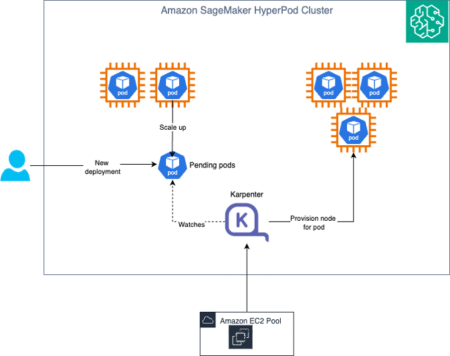Diffusion models, known for their success in generating high-quality images, are now being explored as a foundation for handling diverse data types. These models denoise data and reconstruct original content from noisy inputs. This ability makes diffusion models promising for multimodal tasks involving discrete data, such as text, and continuous data, such as images.
The challenge in multimodal models is building systems that can handle understanding and generation across text and images without using separate methods or architectures. Existing models often struggle to balance these tasks effectively. They are designed for specific tasks like image generation or question answering, which results in limited performance in unified tasks. Post-training techniques that could further align models across reasoning and generation tasks are also underdeveloped, leaving a gap in fully integrated multimodal models that can handle diverse challenges using a single design.
Popular approaches like Show-o, Janus, and SEED-X combine autoregressive models for text and diffusion models for images, requiring separate loss functions and architectures. These models use distinct tokenization schemes and separate pipelines for text and image tasks, complicating training and limiting their ability to handle reasoning and generation in a unified way. Furthermore, they focus heavily on pretraining strategies, overlooking post-training methods that could help these models learn to reason across different data types.
Researchers from Princeton University, Peking University, Tsinghua University, and ByteDance have introduced MMaDA, a unified multimodal diffusion model. This system integrates textual reasoning, visual understanding, and image generation into a probabilistic framework. MMaDA uses a shared diffusion architecture without relying on modality-specific components, simplifying training across different data types. The model’s design allows it to process textual and visual data together, enabling a streamlined, cohesive approach for reasoning and generation tasks.
The MMaDA system introduces a mixed long chain-of-thought (Long-CoT) finetuning strategy that aligns reasoning steps across text and image tasks. The researchers curated a diverse dataset of reasoning traces, such as problem-solving in mathematics and visual question answering, to guide the model in learning complex reasoning across modalities. They also developed UniGRPO, a reinforcement learning algorithm tailored for diffusion models, which uses policy gradients and diversified reward signals, including correctness, format adherence, and alignment with visual content. The model’s training pipeline incorporates a uniform masking strategy and structured denoising steps, ensuring stability during learning and allowing the model to reconstruct content across different tasks effectively.
In performance benchmarks, MMaDA demonstrated strong results across diverse tasks. It achieved a CLIP score of 32.46 for text-to-image generation and an ImageReward of 1.15, outperforming models like SDXL and Janus. In multimodal understanding, it reached a POPE score of 86.1, an MME score of 1410.7, and a Flickr30k score of 67.6, surpassing systems such as Show-o and SEED-X. For textual reasoning, MMaDA scored 73.4 on GSM8K and 36.0 on MATH500, outperforming other diffusion-based models like LLaDA-8B. These results highlight MMaDA’s capacity to deliver consistent, high-quality outputs across reasoning, understanding, and generation tasks.
Overall, MMaDA provides a practical solution to the challenges of building unified multimodal models by introducing a simplified architecture and innovative training techniques. The research shows that diffusion models can excel as general-purpose systems capable of reasoning and generation across multiple data types. By addressing the limitations of existing models, MMaDA offers a blueprint for developing future AI systems that seamlessly integrate different tasks in a single, robust framework.
Check out the Paper, Model on Hugging Face and GitHub Page. All credit for this research goes to the researchers of this project. Also, feel free to follow us on Twitter and don’t forget to join our 95k+ ML SubReddit and Subscribe to our Newsletter.
The post This AI Paper Introduces MMaDA: A Unified Multimodal Diffusion Model for Textual Reasoning, Visual Understanding, and Image Generation appeared first on MarkTechPost.
Source: Read MoreÂ

